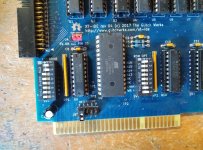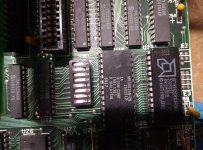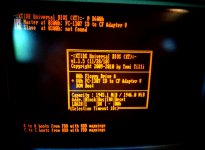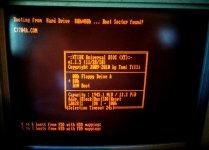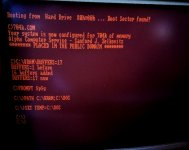modem7
10k Member
In sizing conventional memory, the IBM motherboard BIOS in the 5155/5160 operates differently to that of the 5150. Is simply 'takes a look', but per step 17 at [here], limits its search to 640 KB.Basically I am wondering if this trick can be used on a 5160 or 5155. I am guessing no as it doesn't have the granularity in the switches like a 5150 motherboard has.
However, the use of 704K.COM is expected to get around that. See post #22 at [here].
Reminder: Only suitable if MDA/CGA video card in use. Memory map.
Parity
The other thing that the aforementioned step 17 does, is appropriately set/reset the parity bit of each address. And only up to address 640 KB. And so if the card being used to populate the 640-704K address space has parity circuitry (RAM for parity + associated circuitry), then either:
Option #1: Turn off the card's parity checking. Undesirable
Option #2: Use something to appropriately set/reset the parity bit of each address in the 640-704K address space.
Failure to do either will result in: PARITY CHECK 2 error the first time that software (DOS or other) reads an address in the 640-704K address space where the content of the parity bit does not match with the parity of the data bits at the address.
I remember that Chuck(G) created some software to do option #2.


